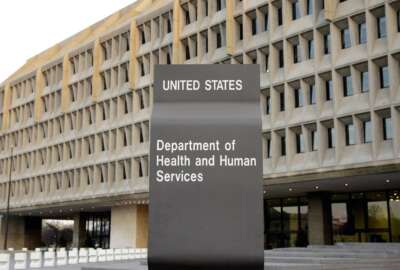With record number of interns, NSF is ‘intentional’ about career growth
At the National Science Foundation, one in five new hires this year has been an intern. Now NSF is looking to make full-time positions more appealing to them.
The National Science Foundation, right now, has the most federal interns it’s ever had.
And those interns, many of whom come in through the government’s Pathways Program, don’t exist in a vacuum. Pathways interns have comprised more than 20% of all General Schedule hires that NSF, a relatively small agency, has made this fiscal year. In total, 40 of NSF’s 195 new GS recruits have come in through Pathways.
“It’s tremendously exciting,” Elicia Moran, NSF’s Pathways Program officer, said during a July 10 President’s Management Agenda event. “We haven’t seen numbers like that before.”
For NSF, managing the Pathways Program goes beyond hiring interns just for a couple months at a time. NSF has a 97% conversion rate for those moving from the early-career program into full-time federal jobs, said Moran, who herself began her federal career as an intern.
With its own special hiring authority, the Pathways Program is one of the easiest ways for agencies to onboard early-career talent, Moran said. Through the program, early-career employees take a temporary position at an agency, with the potential to later convert into a full-time position in the career civil service.
NSF uses all three components of the Pathways Program: interns, recent graduates and Presidential Management Fellows. Pathways internships, though, are the area NSF focuses on the most, employing both year-round and summer interns.
In an effort to encourage interns to remain with the agency after the program ends, NSF is working on revamping its training and development program specifically to support interns.
“We’re trying to be a little bit more intentional about what students need,” Moran said. “If they’re coming in with no experience, do they need particular trainings on Microsoft Teams and Outlook? Do they need problem-solving skills, or networking? And then, really focusing on the competencies for the job path that they’re going onto for the future within NSF.”
Taking advantage of the program is especially important, Moran said, since 30% of the federal workforce will be retirement-eligible in less than five years.
“As agencies, we all have a responsibility to start training and developing new talent from the ground up and filling in those gaps that we’re soon going to have,” Moran said. “Or else we’re going to have a really hard time bringing on talent in general into the federal government and meeting our mission requirements.”
Pathways updates changing the game for agencies
There are also plenty of changes on the horizon for agencies using the Pathways Program. In April, the Office of Personnel Management finalized new Pathways regulations, which officially took effect June 11. The overhaul to the program aims to open the doors to more diverse candidates, while making it easier for agencies to use the program and convert Pathways participants into full-time feds.
The new regulations, for example, lower the requirements needed for conversion into a full-time position, give agencies more time to convert interns into full-time feds, and create options to offer higher pay rates to Pathways participants.
But one other important change OPM made with the new regulations, Moran said, was expanding eligibility for the program. Under the new regulations, agencies can now count a candidate’s completion of an apprenticeship program or a vocational school toward fulfilling Pathways eligibility requirements. Previously, only college graduates were eligible to apply and participate in the recent graduates Pathways Program.
“Not only are you already picking from an immense candidate pool, it’s only gotten larger and more diverse,” Moran said.
Agencies have until Dec. 9 to be in full compliance with the new Pathways regulations. Many of those flexibilities, though, are optional rather than mandatory. In many cases, that means agencies will have to think creatively as they look to implement many of the optional changes.
NSF turning to high school students
NSF, though, is already working through some of those flexibilities. For example, although Pathways is often reserved for college students and young adults, NSF is starting to look at hiring high school students as Pathways interns as well. The agency has just recently opened options for Pathways participants to come in as a GS-1 — an uncommon, but not unheard of, level of entry into federal service.
“We did that intentionally,” Moran said. “This allows students to really make an impact, even when they’re in high school, so that they can see the possibilities that are available to them — and maybe continue their education, whether it’s community college or vocational school or trade school.”
While ushering interns through the program, Moran said NSF also maintains a central pool of full-time agency positions, in cases where there may not be a full-time position immediately available for a graduating intern.
“I think that the misconception is often that the student isn’t ready, they don’t have the tools to work in an office. Especially if they’re younger, that they don’t have the ability to problem solve, or they don’t have the ability to do the level of work that we’re doing,” Moran said. “When folks [say], ‘Oh, a GS-5 can’t do this level of work, a GS-5 is not going to be able to do this — Well, yes, they are, especially if you take the time to invest in them.”
Maintaining the central pool of full-time roles also aims to make it easier on hiring managers, who can then keep a list of available early-career candidates who might be a good fit for a role that opens up.
“It allows offices to recruit talent and to get talent in the pipeline, so that when eventually those early-career positions are available for their divisions or offices, they are able to then put those interns on their own [full-time positions],” Moran said.
“Students here are willing and ready to invest in your agencies, they want to know that there’s opportunities for them to grow with you, and they want to learn,” Moran added. “I’m a product of the Pathways Program. And I can tell you that if you are nurtured and you are mentored and you’re trained from the ground up, you can really make an impact within your agencies.”
Copyright © 2025 Federal News Network. All rights reserved. This website is not intended for users located within the European Economic Area.
Drew Friedman is a workforce, pay and benefits reporter for Federal News Network.
Follow @dfriedmanWFED






